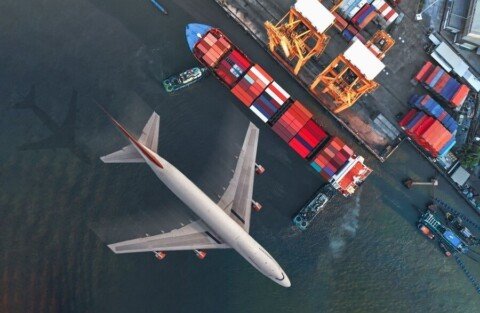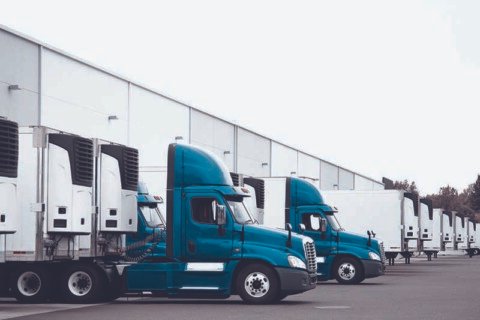Fostering growth through national infra pipeline
11 industrial corridors consisting of 30 projects will come up across the country in four phases by 2024-2025.
The government has set the ball rolling on five of these projects – Dholera Special Investment Region, Shendra Bidkin Industrial Area, Integrated Industrial Township Greater Noida, Integrated Industrial Township Vikram Udyogpuri, and integrated Nangal Chaudhary Multi Modal Logistics Hub, already approved by the government.
Reportedly, discussions will soon begin on Delhi-Nagpur Industrial Corridor, which is one of the 11 industrial corridors in the pipeline.
Western Dedicated Freight Corridor (DFC) has been identified as crucial in meeting the transport needs for the Delhi Mumbai Industrial Corridor (DMIC) project while the Eastern DFC is considered “backbone” for the Amritsar Kolkata Industrial Corridor (AKIC) project. For projects like Chennai Bengaluru Industrial Corridor (CBIC) and Bengaluru Industrial Corridor (BMIC), National Highway 4 is identified as “curcial”.
National Highway 5, which is part of the Golden Quadrilateral and Kolkata-Chennai route have been recognised as “important” for the East Coast Economic Corridor (ECEC). The proposed North South East-West and East Coast Dedicated Freight Corridors will further supplement the existing transportation backbone for the corresponding Industrial Corridors, a note by the Department for Promotion of Industry and Internal Trade (DPIIT) said.
Largest railway project in shape
Freight trains will be running on 40 per cent of the dedicated freight corridor by next year. Most of the sections will be commissioned by March 2022 and the remaining whole eastern and western corridors will be commissioned by June 2022.
Most significantly, with the completion of the Dadri to Rewari section of the DFC, the ‘Roll-on Roll-off’ (Ro-Ro) services of the railways can begin, leading to drastic reduction in pollution in Delhi NCR. Under the service, loaded trucks can be moved on flat rakes to avoid congestion on roads.
The Railways has three more corridors in the pipeline– the East Coast Corridor, the East-West Corridor and the North-South Sub-Corridor, and the surveys for these DFCs are expected be completed by 2021. These corridors are slated to be completed by 2030.
The 1,115-km East Coast Corridor will be from Kharagpur in West Bengal to Vijayawada in Andhra Pradesh; and the 975-km North-South Sub-Corridor will connect Vijayawada-Nagpur-Itarsi.
The East-West corridor comprises 1,673 km of route connecting Bhusaval-Nagpur-Kharagpur-Dankuni and 195-km of route connecting Rajkharswan-Kalipahari-Andal.
Transmuting the Indian maritime set-up
The government next aim is creating a port grid in the country besides development of waterways and coastal shipping. 1,400 km of waterways have been fully developed and an additional 1,000 km of waterways are being developed on a priority basis.
In November 2019, it was announced that the Government will assess the potential of over 150 ‘non-major’ ports in the country, and consider linking them with ‘Major’ ports to form a national grid of ports.
Non-major’ ports are regulated by various state maritime boards. While Major ports continue to attract the bulk of the traffic (handling 55 per cent throughput), several non-major ports have also started handling substantial volumes. They have grown in importance in 3-4 states mainly because of their cargo-rich hinterland and proactive maritime boards. Gujarat accounts for 70 per cent of non-major port’s cargo, while Andhra Pradesh accounts for 16 per cent, Maharashtra 7 per cent, and Odisha 4 per cent.
Reportedly, the government’s focus is on increasing India’s export-import (EXIM) cargo volumes by improving connectivity through enhanced coastal shipping. This would involve further development of smaller ports and their inter-linking with Major ports, among other aspects.
Besides, the proposed Indian Ports Bill, 2020 will be a ‘Game Changer’ in the Indian Maritime sector specially for bringing more investments to this core infrastructure sector.
The Draft Indian Ports Bill, 2020, seeks to enable the structured growth and sustainable development of ports to attract investments in the Port sector for optimum utilisation of the Indian Coastline by effective administration and management of ports.
The proposed Bill will provide measures to facilitate conservation of ports, taking into account the prevalent situation with respect to the high number of non-operational ports. It shall further ensure greater investment in the Indian maritime and ports sector through the creation of improved, comprehensive regulatory frameworks for the creation of new ports and management of existing ports.
The Bill also seeks to create an enabling environment for the growth and sustained development of the ports sector in India through the following broad methods including constitution of Maritime Port Regulatory Authority.
The proposed Bill envisages formulation of the National Port Policy and National Port Plan in consultation with Coastal state’s governments, state maritime boards and other stakeholders.
Moreover, the Central Board of Indirect Taxes and Customs (CBIC) had recently issued the revised policy and guidelines for setting up of inland container depots (ICDs), container freight stations (CFSs), and airfreight stations (AFSs) to address the issues of geographical disparity and concentration and aims to align future developments with projects like rail freight corridor and inland waterways.
The revised policy has factored the developments in the sector in the last two decades, including the growth in volumes during this period, geographical concentration of CFSs/ICDs, implementation of schemes like direct port delivery/direct port entry.
Besides, it has also taken into consideration other automation and efficiency improvement measures; and also, the infrastructure developments like direct freight corridor and inland waterways.
The food rush
A grant of Rs 107.42 crore has been approved for implementing 28 food processing projects spread over 10 states with overall project costs amounting to Rs 320.33 crore.
The projects spread across the states of Madhya Pradesh, Gujarat, Uttar Pradesh, Maharashtra, Jammu and Kashmir, Karnataka, Tamil Nadu, Uttarakhand, Assam, and Manipur will create a processing capacity of 1,237 tonnes daily. These projects are likely to generate employment for nearly 10,000 people.
A grant of Rs 20.35 crore has been specifically approved for six projects in the Northeast. These projects are worth Rs 48.87 crore.
The projects have been applied by Ministry of Food Processing Industries (MoFPI) through a unit scheme of Creation and Expansion of Food Processing and Preservation Capacities (CEFPPC) under the Pradhan Mantri Kisan Sampada Yojana (PMKSY) for necessary grants-in-aid.
Centre’s cold comfort
29,000 cold chain points, 240 walk-in coolers, 70 walk-in freezers, 45,000 ice-lined refrigerators, 41,000 deep freezers and 300 solar refrigerators will be used for COVID-19 vaccine storage. In order to strengthen the ecosystem, 11 good clinical practices compliant clinical trial sights have also been established across the country. In fact, all necessary resources of vaccination have been delivered to the states from the centre.
To be sure on their part, 36 states and union territories have concluded meetings of State Steering Committees and State Task Force. 633 districts have concluded meetings of District Task Force.
Furthermore, training modules for medical officers, vaccinator officers, alternative vaccinator officers, cold chain handlers, supervisors, data managers, ASHA coordinators, etc. are also finalised. Physical training as well as training on virtual/online platforms has started, while national and State Training of Trainers (ToTs) workshops have completed.
States have been asked to implement an integrated 360-degree comprehensive advocacy communication and social mobilisation strategy to address the challenges surrounding vaccine rollout progress and benefits.
According to the guidelines issued to states recently, the COVID Vaccine Intelligence Network (Co-WIN) system–a digitalised platform–will be used to track enlisted beneficiaries for the vaccination and anti-coronavirus vaccines on a real-time basis.







